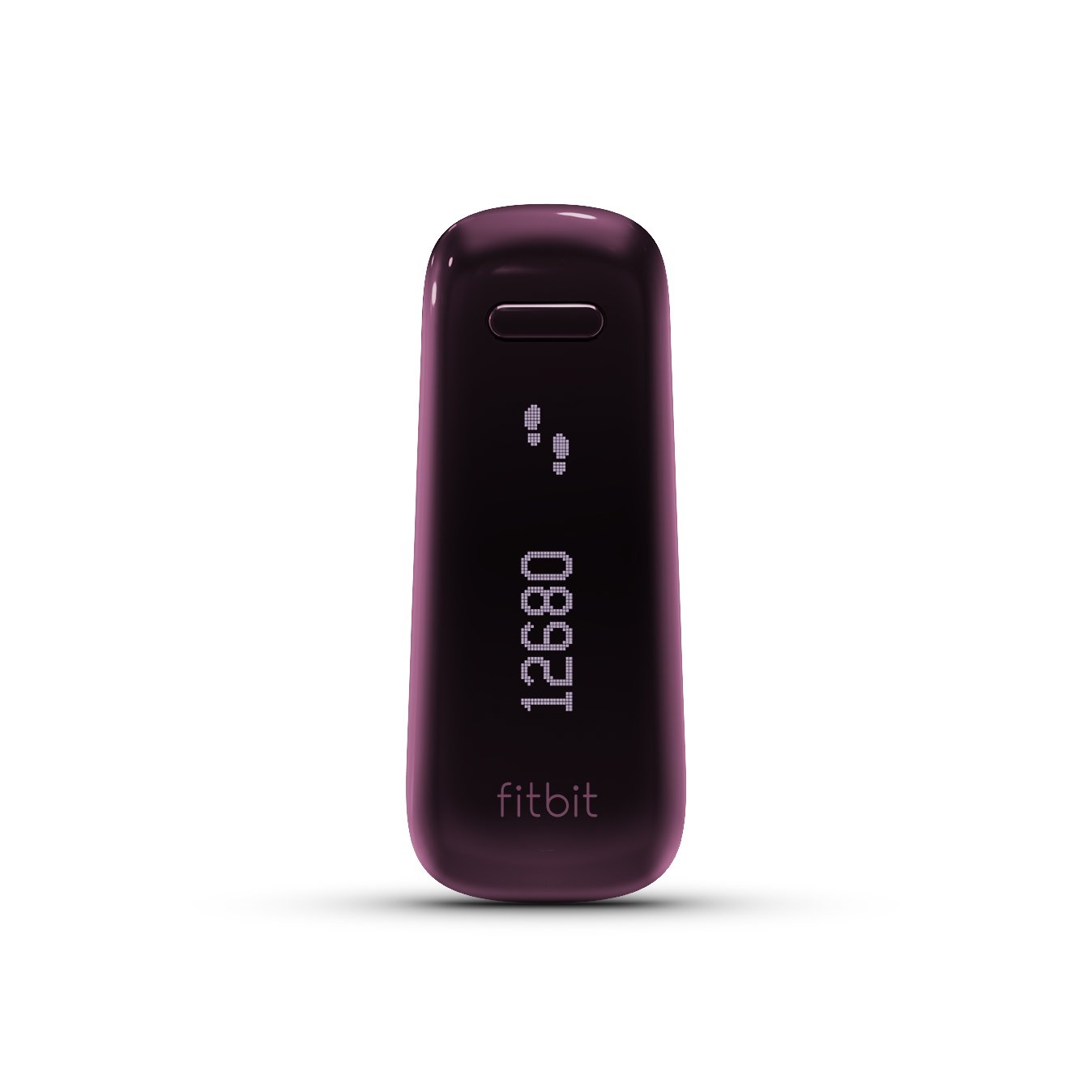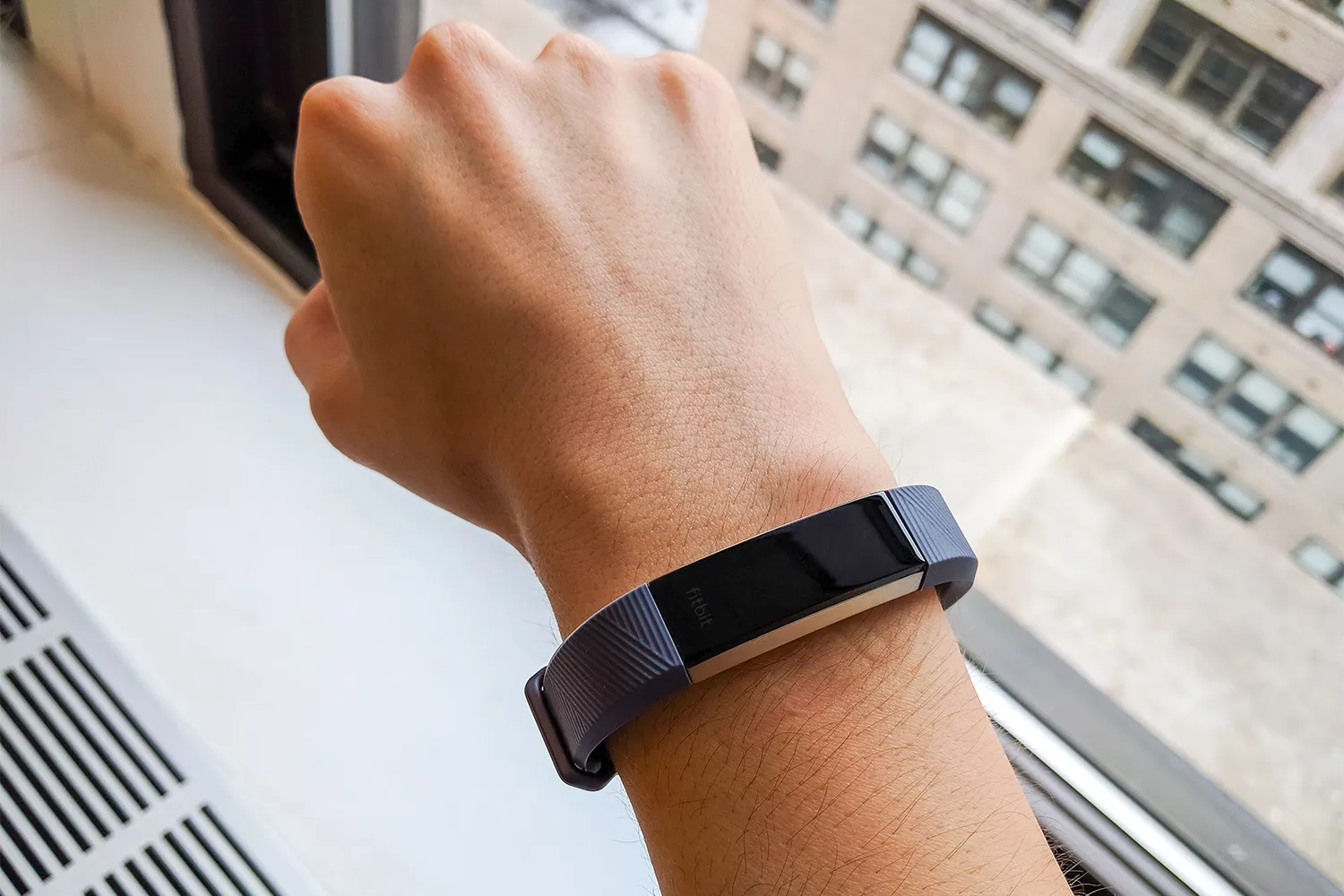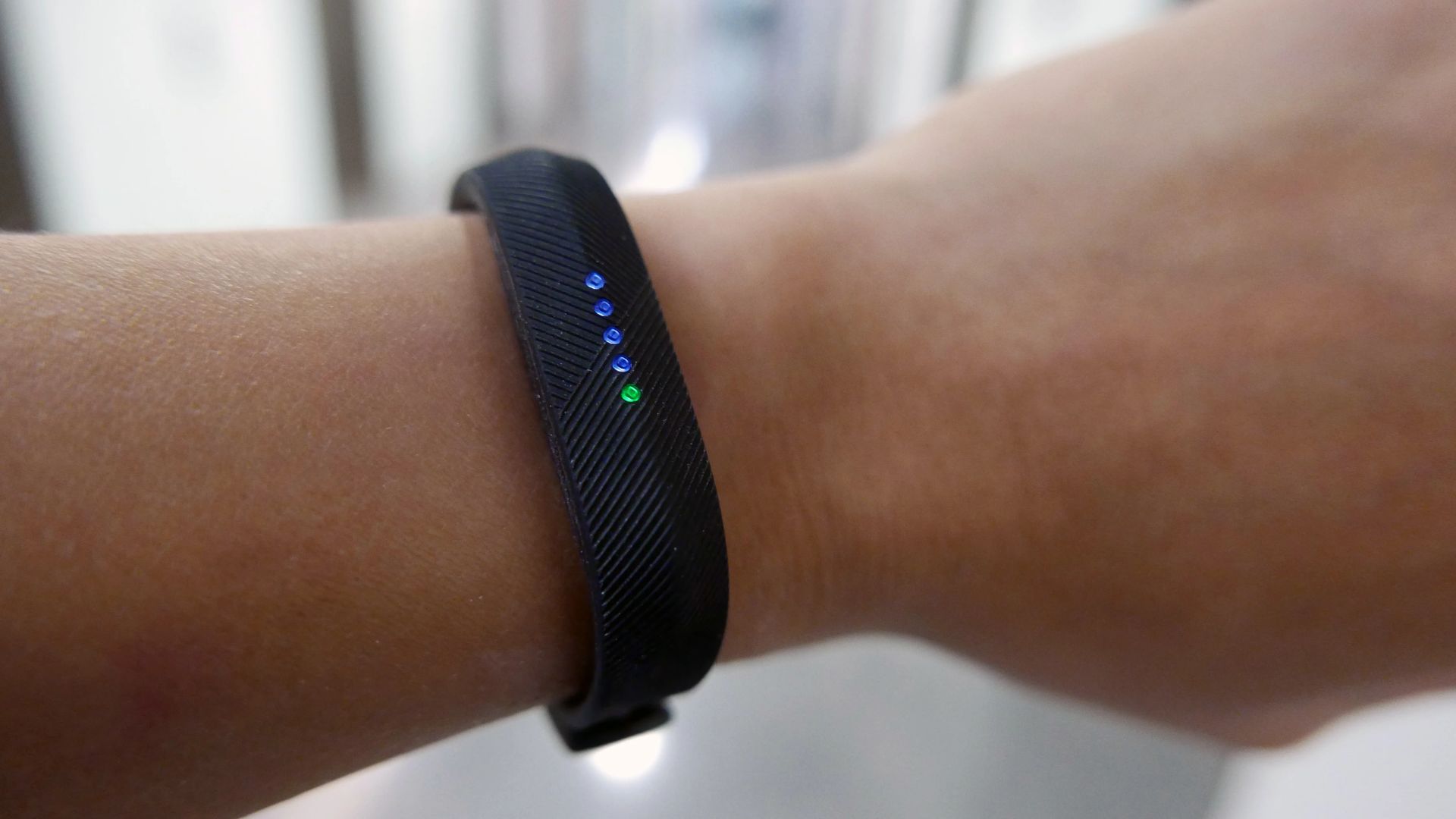Introduction
Welcome to the world of Fitbit sleep tracking! If you’re looking to take control of your sleep patterns and gain valuable insights into your nighttime habits, Fitbit has you covered. With its advanced sleep tracking features, you can now monitor your sleep duration, track REM and deep sleep stages, and obtain personalized sleep scores.
Proper sleep is essential for overall well-being, and Fitbit helps you understand and improve your sleep quality. Whether you’re struggling with sleep issues or simply want to optimize your sleep routine, setting up your Fitbit device for sleep tracking is an important first step.
In this guide, we’ll take you through the process of setting up your Fitbit for sleep tracking. By following these steps, you’ll be on your way to unlocking a wealth of information about the quality and duration of your sleep, and be better equipped to make positive changes to your sleeping habits.
We’ll cover downloading the Fitbit app, signing up or logging into your Fitbit account, selecting your Fitbit device, setting up sleep tracking, customizing sleep settings, wearing your Fitbit to bed, and syncing your Fitbit device in the morning. By the end of this guide, you’ll be well on your way to becoming a sleep tracking pro!
Step 1: Download the Fitbit App
The first step in setting up your Fitbit for sleep tracking is to download the Fitbit app onto your smartphone or tablet. The Fitbit app is available for free on both iOS and Android platforms, and it’s essential for syncing your Fitbit device and accessing your sleep data.
To download the app, simply go to the App Store or Google Play Store and search for “Fitbit.” Once you find the official Fitbit app, tap on the “Install” or “Get” button to begin the download process.
Make sure you have a stable internet connection and enough storage space on your device to accommodate the app. Once the download is complete, tap on the app icon to launch it.
If you already have the Fitbit app, ensure that you have the latest version installed by checking for any available updates in your device’s app store. Keeping the app up-to-date is important to access all the latest features and bug fixes.
When you first open the Fitbit app, you’ll be prompted to sign in or create a Fitbit account. If you’re new to Fitbit, follow the on-screen instructions to create an account. If you already have a Fitbit account, simply sign in with your existing credentials.
Creating a Fitbit account allows you to save and access your sleep data across multiple devices, receive personalized recommendations, join challenges, and connect with the Fitbit community.
Step 2: Sign Up or Log In to Your Fitbit Account
After downloading the Fitbit app, the next step is to sign up or log in to your Fitbit account. Your Fitbit account allows you to sync your Fitbit device, track your sleep data, and access additional features and personalized recommendations.
If you’re new to Fitbit, follow the prompts to create a new account. You’ll need to provide some basic information, such as your name, email address, and password. Make sure to choose a strong password to protect your account.
If you already have a Fitbit account, tap on the “Log In” button and enter your email address and password. If you’ve forgotten your password, you can initiate a password reset through the app or Fitbit’s website.
Once you’ve signed in to your Fitbit account, you can customize your profile by adding your personal details, such as your height, weight, and gender. This information helps Fitbit calculate accurate sleep statistics and provide personalized recommendations based on your goals and preferences.
Additionally, by connecting your Fitbit account to other fitness and health apps, such as MyFitnessPal or Strava, you can integrate data from various sources into a comprehensive health and wellness profile.
Signing up or logging in to your Fitbit account not only allows you to unlock the full potential of your Fitbit device but also provides a seamless experience across multiple devices. You can access your sleep data and track your progress from your smartphone, tablet, or computer, ensuring that you stay connected and engaged with your sleep goals.
Step 3: Select Your Fitbit Device
Once you’ve signed up or logged in to your Fitbit account, it’s time to select the Fitbit device you’ll be using for sleep tracking. Fitbit offers a range of devices, from fitness trackers to smartwatches, each with its own set of features and capabilities.
To select your Fitbit device, navigate to the “Account” or “Settings” section of the Fitbit app. Look for the option that allows you to “Set Up a Device” or “Add a Device.” Tap on this option to begin the device setup process.
The app will then guide you through a series of steps to pair and connect your Fitbit device with your smartphone or tablet. Make sure your Fitbit device is fully charged and in close proximity to your device to ensure a successful connection.
During the setup process, you’ll be prompted to select your specific Fitbit model from a list of available devices. If you’re unsure about the exact model, you can typically find the name of your device on the back or underside of the Fitbit itself.
Once you’ve selected your device, the Fitbit app will establish a connection with your Fitbit and synchronize any available software updates. This ensures that your device is running the latest firmware, providing you with the optimal sleep tracking experience.
If you haven’t purchased a Fitbit device yet, you can browse the options available in the Fitbit app or visit the Fitbit website for more information. Consider your specific needs and preferences, such as style, functionalities, and budget, to choose the Fitbit device that best suits you.
Remember, the sleep tracking capabilities may vary among Fitbit devices, so make sure to choose a device that offers the level of sleep tracking detail you desire. Some Fitbit models even feature advanced sleep metrics, such as Sleep Stages, Sleep Score, and Sleep Insights, for a more comprehensive understanding of your sleep patterns.
Once you’ve selected and set up your Fitbit device, you’ll be ready to dive into the world of sleep tracking and unlock the valuable insights that can help improve your sleep habits and overall well-being.
Step 4: Set Up Sleep Tracking
Now that you have selected your Fitbit device, it’s time to set up the sleep tracking feature. Sleep tracking allows your Fitbit device to monitor and record your sleep patterns, providing you with comprehensive data on your sleep duration, sleep stages, and sleep quality.
To set up sleep tracking, open the Fitbit app on your smartphone or tablet and navigate to the sleep tracking settings. The location of these settings may vary slightly depending on your device and app version, but it is typically found under the “Account” or “Settings” section.
In the sleep tracking settings, you will find the option to enable sleep tracking. Tap on this option to activate sleep tracking on your Fitbit device. Some Fitbit models may allow you to set automatic sleep tracking, which means your device will automatically detect when you fall asleep and wake up, without the need to manually start and stop sleep tracking.
If your device does not have automatic sleep tracking, you will need to manually start and stop sleep tracking in the Fitbit app. Before going to bed, simply tap on the “Sleep” button in the app, and when you wake up, tap on the “Wake” button to end the sleep tracking session.
It’s important to note that for accurate sleep tracking, you should wear your Fitbit device while you sleep. Fitbit offers a variety of comfortable wristbands and accessories designed for extended wear, ensuring that the device stays securely on your wrist throughout the night.
Once sleep tracking is enabled, your Fitbit device will begin monitoring your sleep patterns. It will track various sleep metrics, including your total sleep time, time spent in each sleep stage (REM, deep, and light sleep), and any disturbances or interruptions during the night.
Additionally, if your Fitbit device supports it, you may have access to advanced sleep metrics such as Sleep Score and Sleep Insights. Sleep Score provides a comprehensive assessment of your sleep quality based on various factors, while Sleep Insights offers personalized recommendations and tips to optimize your sleep habits.
By setting up sleep tracking, you’ll gain valuable insights into your sleep patterns and be able to make informed decisions to improve your sleep quality and overall well-being.
Step 5: Customize Sleep Settings
Customizing your sleep settings allows you to tailor the sleep tracking experience on your Fitbit device to meet your specific needs and preferences. With these customizable options, you can fine-tune your sleep tracking and receive more accurate and personalized sleep data.
To customize your sleep settings, open the Fitbit app and navigate to the sleep tracking settings. Look for the option that allows you to adjust or customize your sleep settings. This section may be labeled as “Sleep Settings” or something similar.
Within the sleep settings, you’ll find a range of options that you can modify according to your preferences. Some of the common customization options include:
- Sleep Goal: Set a target sleep duration that you wish to achieve each night. Fitbit recommends 7-9 hours of sleep for adults. Adjust your sleep goal to align with your personal sleep needs.
- Silent Alarms: Enable or disable silent alarms to wake you up with gentle vibrations instead of sound. This feature allows you to wake up without disturbing your partner.
- Bedtime Reminders: Receive notifications reminding you to go to bed a certain amount of time before your desired sleep target. These reminders can help establish a consistent sleep routine.
- Do Not Disturb: Enable this setting to mute notifications and prevent any disturbances during your sleep time. This ensures you have uninterrupted rest.
- Night Mode: Activate night mode to dim the screen brightness and disable unnecessary features during your sleep hours. This helps create a more conducive sleep environment.
Additionally, depending on your Fitbit device model, you may have access to more advanced customization options, such as enabling sleep stage notifications or setting specific sleep goals for each sleep stage.
Take some time to explore and adjust these settings based on your preferences and sleep habits. Experiment with different options to find the configuration that works best for you.
Remember, by customizing your sleep settings, you can personalize your sleep tracking experience and gain more meaningful insights into your sleep patterns. It’s all about creating a sleep tracking routine that aligns with your lifestyle and goals.
Step 6: Wear Your Fitbit to Bed
Once you have set up and customized your sleep settings, it’s time to wear your Fitbit device to bed. Wearing your Fitbit device while you sleep is crucial for accurate sleep tracking and capturing essential data on your sleep patterns.
Fitbit devices are designed to be comfortable and unobtrusive, allowing you to wear them throughout the night without disrupting your sleep. Most Fitbit devices are worn on the wrist like a watch, while others can be clipped to clothing or worn as a pendant.
Before going to bed, ensure that your Fitbit device is securely fastened to your wrist or clothing. Adjust the band or clip to ensure a snug fit that won’t easily come loose during the night.
It’s important to note that some Fitbit devices offer specific sleep tracking modes or features that optimize sleep tracking accuracy. These modes may include different settings or sensors that are specifically tailored for nighttime sleep tracking. Be sure to consult the user manual or the Fitbit app for any device-specific recommendations.
While wearing your Fitbit to bed, try to maintain your usual sleep routine and habits. Follow your regular bedtime schedule, sleep environment, and sleep preparation rituals. The presence of your Fitbit device should not disrupt your sleep or change your normal sleep behavior.
If you have trouble sleeping with something on your wrist or prefer not to wear your Fitbit device to bed, you can still manually log your sleep duration and quality in the Fitbit app. However, wearing the device offers the added benefit of capturing detailed sleep insights, such as sleep stages and disturbances.
Remember to charge your Fitbit device regularly to ensure it has enough battery power before bedtime. Most Fitbit devices have a battery life that can last multiple days, but it’s essential to establish a habit of charging your device to avoid any interruptions in sleep tracking.
By wearing your Fitbit device to bed, you’ll be able to gather valuable information about your sleep patterns, sleep duration, sleep stages, and sleep quality. This data will help you gain a better understanding of your sleep habits and make informed decisions to improve your overall sleep health.
Step 7: Sync Your Fitbit in the Morning
After a restful night’s sleep, it’s time to sync your Fitbit device in the morning to retrieve and analyze your sleep data. Syncing your Fitbit allows you to transfer the sleep data recorded throughout the night to the Fitbit app on your smartphone or tablet.
To sync your Fitbit device, make sure it is within range of your smartphone or tablet that has the Fitbit app installed. Open the Fitbit app and navigate to the dashboard or home screen.
In the app, you will see a sync button or an option to manually sync your device. Tap on this button to initiate the syncing process. Your Fitbit device will communicate with the app and transfer the sleep data it has collected.
Syncing typically takes only a few seconds, but it may take slightly longer if you have a large amount of data to transfer. Make sure to keep your Fitbit device close to your smartphone or tablet during the syncing process to ensure a strong and uninterrupted connection.
Once the sync is complete, you can explore your sleep data on the Fitbit app. You will be able to view a detailed summary of your sleep duration, sleep stages (REM, deep, and light sleep), and any disturbances or interruptions throughout the night.
Take the time to analyze your sleep data and look for any trends or patterns. Are you consistently meeting your sleep goal? Are you experiencing disruptions during the night that may be affecting your sleep quality? This information can help you make adjustments to your sleep routine and improve your overall sleep health.
Syncing your Fitbit device in the morning also updates your sleep data on the Fitbit website and allows you to access your sleep information from any device with internet access. This ensures that you have access to your sleep data no matter where you are.
Make syncing your Fitbit device a part of your morning routine. By regularly syncing your device, you’ll be able to stay up-to-date with your sleep progress, track improvements over time, and make informed decisions about your sleep habits.
Remember, syncing is not limited to just your sleep data. It also allows you to keep track of your daily activity, exercise, heart rate, and other health metrics recorded by your Fitbit device.
So, make it a habit to sync your Fitbit device every morning and take the opportunity to celebrate your achievements, set new goals, and continue your journey towards better sleep and overall wellness.
Conclusion
Setting up and utilizing the sleep tracking feature on your Fitbit device can be a game-changer when it comes to understanding and improving your sleep quality. By following the steps outlined in this guide, you have taken the necessary steps to optimize your sleep tracking experience.
Starting with downloading the Fitbit app, signing up or logging into your Fitbit account, selecting your Fitbit device, and setting up sleep tracking, you have set the foundation for monitoring and analyzing your sleep patterns. By customizing your sleep settings, wearing your Fitbit device to bed, and syncing it in the morning, you have ensured that you have a seamless and complete sleep tracking experience.
Remember, consistent sleep tracking is key to gaining insights into your sleep habits and making improvements. Use the data provided by your Fitbit device to evaluate the quality and duration of your sleep, and identify any areas that may need attention or adjustment.
By optimizing your sleep routine and making informed decisions based on your sleep data, you can work towards achieving healthier and more restful sleep. Prioritize your sleep and make it a priority to establish a consistent sleep schedule, create a sleep-friendly environment, and practice good sleep hygiene habits.
With the help of your Fitbit device and the information it provides, you can take control of your sleep health and embark on a journey towards better sleep and overall well-being. Use the personalized recommendations, insights, and sleep scores offered by Fitbit to make positive changes to your sleep habits and unlock the full potential of your restful nights.
Make the most of your Fitbit device’s sleep tracking capabilities and enjoy the benefits of better sleep and improved well-being. Sleep well, wake up refreshed, and take on each day with energy and vitality!



















